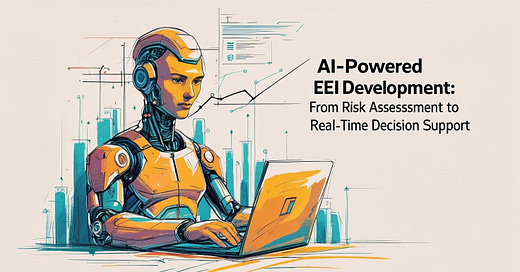AI-Powered EEI Development: From Risk Assessment to Real-Time Decision Support
How to eliminate endless stakeholder meetings and build systematic information collection workflows
The EEI Planning Problem Every Emergency Manager Faces
You know you need Essential Elements of Information before the next incident hits. But getting there feels impossible.
You schedule meetings with Public Works, Fire, Police, Health Department, Schools, and Public Information. Each group has different priorities, different systems, different ideas about what information matters. Three months and countless meetings later, you have a 15-page document that nobody remembers and half the stakeholders disagree with.
Meanwhile, you still don't have clear answers to basic questions: What specific information do we need to collect? Who's responsible for getting it? How does it flow from the field to the EOC? What gets displayed on our dashboard for decision-making? How do we know when we're missing critical information?
Here's what I've learned after experiencing this: AI can generate comprehensive EEI frameworks that give stakeholders something concrete to react to, validate, and refine. Instead of starting with blank whiteboards and abstract discussions, you walk into meetings with detailed proposals that stakeholders can immediately improve.
The result? EEI frameworks that actually get used, stakeholder buy-in because they helped shape the final product, and systems that can be automated because the workflows are clearly defined.
Learning From Real-World Chaos
I've experienced this problem firsthand. Working in an organization where essential elements of information weren't predefined, we found ourselves scrambling when incidents occurred. Leadership needed information to make decisions about what was happening and what might happen next, but we had no systematic way to collect it.
This experience led me to explore how FEMA's Community Lifelines framework could provide structure for EEI development. As I wrote in EM Tech #4: Lifeline Reporting with Essential Elements of Information:
The lifelines concept helps organize information collection around critical community functions: Safety & Security, Health & Medical, Communications, Energy, Food/Water/Shelter, Transportation, and Hazardous Materials.
The field teams didn't know what specific information to report on. Some data was changing so rapidly that by the time our situation reports went out, the information was already outdated. We had no live dashboard tracking essential elements of information, so leadership, support functions, and sections were constantly asking for status updates instead of having real-time situational awareness.
Here's what I learned we needed: a framework that defined exactly what information to collect and a clear process for collecting it—before the incident hits.
Keep reading with a 7-day free trial
Subscribe to EM Tech to keep reading this post and get 7 days of free access to the full post archives.




